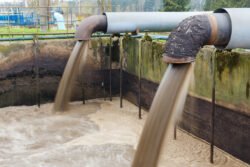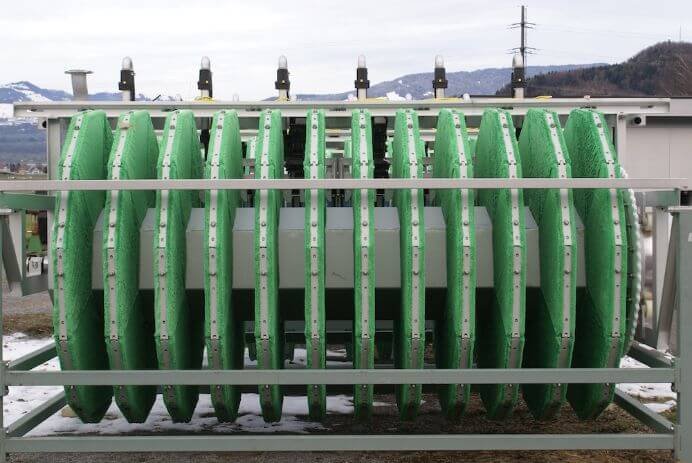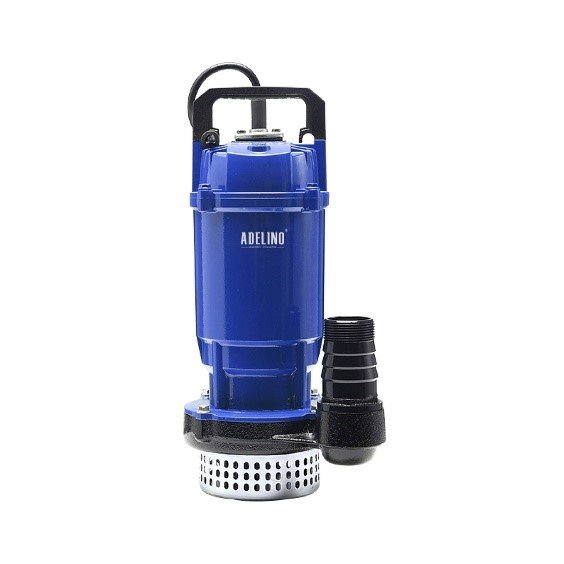Contaminants In Municipal Wastewater May Come From
Introduction
Municipal wastewater is a byproduct of both residential and commercial activities within a community. This wastewater is composed of a varied and complex mixture of water and pollutants, requiring sophisticated treatment processes to prevent environmental contamination and mitigate health risks. One of the most pressing concerns in modern wastewater management is identifying and understanding the sources of contaminants in municipal wastewater. This article delves into the different origins of these contaminants, examining how household, industrial, and agricultural activities contribute to the complex matrix of municipal wastewater. We will also explore the implications of these contaminants on public health, environmental sustainability, and wastewater treatment processes.
1. Household Sources
Households are significant contributors to municipal wastewater contaminants. Understanding the contributions from domestic activities is vital for developing effective wastewater treatment and pollution prevention strategies.
1.1 Personal Care Products and Pharmaceuticals
Personal Care Products: Items like shampoos, conditioners, lotions, and makeup contain various chemicals, many of which are non-biodegradable. Ingredients like parabens, phthalates, and triclosan can persist in the environment and potentially disrupt endocrine systems of wildlife.
Pharmaceuticals: Unused or expired medications are often improperly disposed of down the toilet or sink. These include antibiotics, painkillers, and hormones. These substances can pass through wastewater treatment plants (WWTPs) largely unaltered and enter aquatic ecosystems, where they can cause antibiotic resistance among bacteria or disrupt the reproductive systems of aquatic organisms.
1.2 Cleaning Products
Cleaning agents used in households contribute another layer of complexity to wastewater contamination. Biocides, surfactants, and solvents are common in these products. Surfactants can reduce surface tension, affecting aquatic organisms, while biocides can reduce the microbial life essential for natural biodegradation processes.
1.3 Food Waste and Organic Matter
Careless disposal of food waste can lead to increased biochemical oxygen demand (BOD) and chemical oxygen demand (COD) in municipal wastewater. High BOD and COD levels can deplete dissolved oxygen in receiving waters, negatively affecting aquatic life. Additionally, kitchen fats, oils, and greases (FOG) contribute to blockages in sewers and can form fatbergs—large masses that require significant resources to remove.
2. Industrial Sources
Industry plays a substantial role in contributing contaminants to municipal wastewater. Although heavily regulated, industrial discharges can contain a wide array of pollutants.
2.1 Manufacturing and Chemical Industries
Chemical Manufacturing: Often discharge heavy metals, solvents, and organic chemicals into the wastewater system. Heavy metals like lead, mercury, and cadmium are particularly concerning, given their toxicity and persistence in the environment.
Pharmaceutical and Cosmetic Industries: Release active pharmaceutical ingredients and intermediates. The effects of these compounds can be long-lasting, with potential impacts on human health and ecological balance.
Textile and Dyeing Industries: Use and discharge various dyes and chemicals, many of which are toxic and resist biological degradation. These contaminants can contribute to the color and chemical pollution in water bodies.
2.2 Food and Beverage Processing
These industries contribute substantial organic load to wastewater. The effluents are often rich in carbohydrates, proteins, and fats. While these are biodegradable, their high concentrations can overwhelm treatment facilities and affect the microbial populations responsible for breaking down organic matter.
2.3 Electronic Manufacturing
E-Waste: The production and disposal of electronic goods involve a range of toxic substances, including brominated flame retardants, heavy metals, and various organic solvents. Improper handling and disposal can lead to these substances entering the wastewater system.
3. Agricultural Sources
Although not directly linked to urban areas, agricultural activities significantly affect municipal wastewater, particularly through non-point source pollution.
3.1 Pesticides and Herbicides
Runoff from agricultural lands can carry pesticides and herbicides into municipal wastewater systems. These chemicals are designed to be toxic to pests but can also harm beneficial organisms, including those in WWTPs. Many of these chemicals are persistent, remaining active in the environment long after their initial application.
3.2 Fertilizers and Nutrient Runoff
Excessive use of synthetic fertilizers leads to nutrient runoff, primarily nitrogen and phosphorus, which can lead to nutrient loading in municipal wastewater. This can cause eutrophication in downstream water bodies, leading to algal blooms and hypoxic conditions that harm aquatic life.
3.3 Animal Waste
Animal farming, especially concentrated animal feeding operations (CAFOs), generates large amounts of waste. This waste can enter waterways, increasing nutrient loads and introducing pathogens and pharmaceuticals used in veterinary medicine into the system.
4. Urban Runoff
Urban runoff, highly variable in composition, constitutes a significant source of contaminants in municipal wastewater.
4.1 Stormwater
Stormwater can pick up various contaminants from urban landscapes, including heavy metals from car brake linings, hydrocarbons from vehicle exhausts, and rubber particles from tire wear. During heavy rains, combined sewer systems designed to handle both sewage and stormwater can overflow, discharging untreated waste directly into nearby water bodies.
4.2 Road Salts and De-icing Agents
Road salts (sodium chloride) and other de-icing agents used during winter months contribute to increased salinity in freshwater systems, which can be harmful to aquatic life and can interfere with the biological processes at WWTPs.
4.3 Construction Sites
Activities at construction sites can generate sediment-laden runoff that contains various contaminants like heavy metals, oils, and construction materials. Silt and sediment can clog waterways and disrupt aquatic habitats.
5. Microplastics and Emerging Contaminants
One of the burgeoning fields of study in wastewater management is the identification and effects of microplastics and other emerging contaminants.
5.1 Microplastics
These are tiny plastic particles originating from larger plastic debris, synthetic fibers from clothing, personal care products, and a myriad other sources. Microplastics can absorb and concentrate toxic chemicals, acting as carriers. They can enter human and animal bodies, leading to potential health risks.
5.2 Emerging Contaminants
Compounds such as endocrine disruptors, nanomaterials, and per- and polyfluoroalkyl substances (PFAS) are gaining attention. These contaminants are not yet fully understood or consistently monitored but are increasingly recognized for their potential health and environmental impacts.
6. Implications for WWTPs
Understanding the multifaceted origins of contaminants in municipal wastewater informs the operational protocols and design of WWTPs.
6.1 Treatment Challenges
Different contaminants require different treatments. For example, pharmaceutical compounds might need advanced oxidation processes or activated carbon filtration, whereas heavy metals might be precipitated out using specific chemicals.
6.2 Impact on Treatment Efficacy
Certain contaminants, such as high salinity from de-icing agents, can affect the microbial communities essential for biological treatment processes. Similarly, toxic industrial discharges can inhibit microbial activity, leading to reduced treatment efficacy.
6.3 Sludge Management
Contaminants in wastewater concentrate in the sludge, making its disposal complex. Heavy metals and organic contaminants restrict the use of sludge as fertilizer, necessitating costly and environmentally friendly disposal methods.
7. Mitigation Strategies
Mitigating the impact of these various contaminants involves multiple strategies and stakeholder cooperation.
7.1 Source Reduction
One effective way is through source reduction – eliminating contaminants before they enter the wastewater system. This can be achieved through public education, better regulatory policies, and innovations in industrial processes to reduce waste production.
7.2 Advanced Treatment Technologies
Emphasis on research and development of advanced treatment technologies, such as membrane bioreactors, advanced oxidation processes, and biochar adsorption systems, can provide better removal efficiencies for complex contaminants.
7.3 Policy and Regulation
Strict regulatory frameworks and policies concerning pollutant discharge limits, coupled with effective enforcement mechanisms, can significantly reduce industrial and agricultural contributions to municipal wastewater.
7.4 Public Awareness
Raising awareness among the public about the environmental and health impacts of improper disposal of household chemicals, pharmaceuticals, and personal care products can lead to more responsible behaviors.
7.5 Integrated Water Management
Adopting an integrated water management approach, which includes green infrastructure and sustainable urban drainage systems, can help mitigate urban and stormwater runoff, reducing the burden on municipal wastewater systems.
Conclusion
Contaminants in municipal wastewater arise from a myriad of sources, including households, industries, agriculture, and urban runoff. Each type of contaminant presents unique challenges that require a robust blend of technological, regulatory, and educational interventions for effective management. Comprehensive understanding and targeted strategies can lead to safer environmental practices, more efficient wastewater treatment processes, and ultimately, the safeguarding of public health and environmental integrity. Implementing holistic and adaptive management practices will be crucial in addressing the ever-evolving landscape of municipal wastewater contamination.



